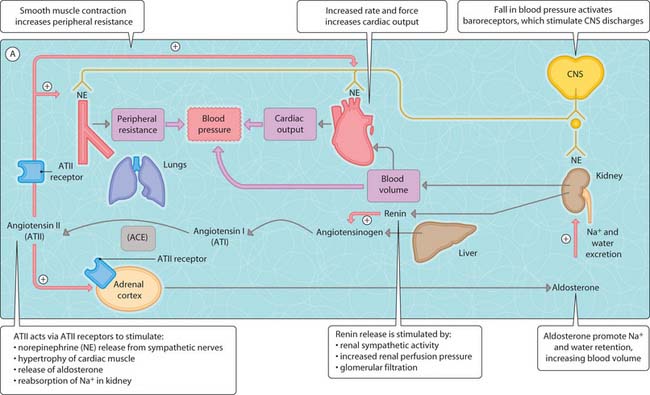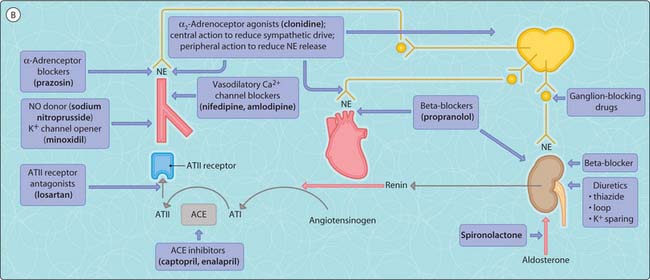13 Hypertension
Pathophysiology
Blood pressure is determined by cardiac output, total peripheral resistance and blood volume (Fig. 3.13.1A). Hypertension is defined as a diastolic blood pressure greater than 90–100 mmHg; if untreated, it can be fatal. It can increase the risk of thrombosis, stroke and renal failure. Risk factors for hypertension include obesity, smoking, diabetes, hyperlipidaemia and left ventricular failure, although the underlying cause is not known in the majority (primary or essential hypertension).
Treatment of hypertension
Diuretics
Diuretics are discussed in Ch. 17. While the initial fall in blood volume correlates with Na+ and water loss, the fall in cardiac output is not maintained despite demonstrable hypotensive action. Furthermore, loop diuretics are only moderately effective antihypertensive agents. Therefore, other mechanisms must account for the reduction of total peripheral resistance with these agents. Thiazide diuretics may activate ATP-dependent potassium channels in resistance arterioles, leading to smooth muscle relaxation. Side-effects of these drugs include hypokalaemia, which can be minimized by using K+ supplements or replacing with K+-sparing diuretic agents. Thiazides may also cause sexual dysfunction in men.
Stay updated, free articles. Join our Telegram channel

Full access? Get Clinical Tree







